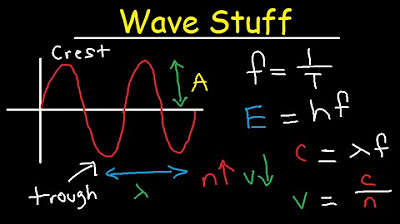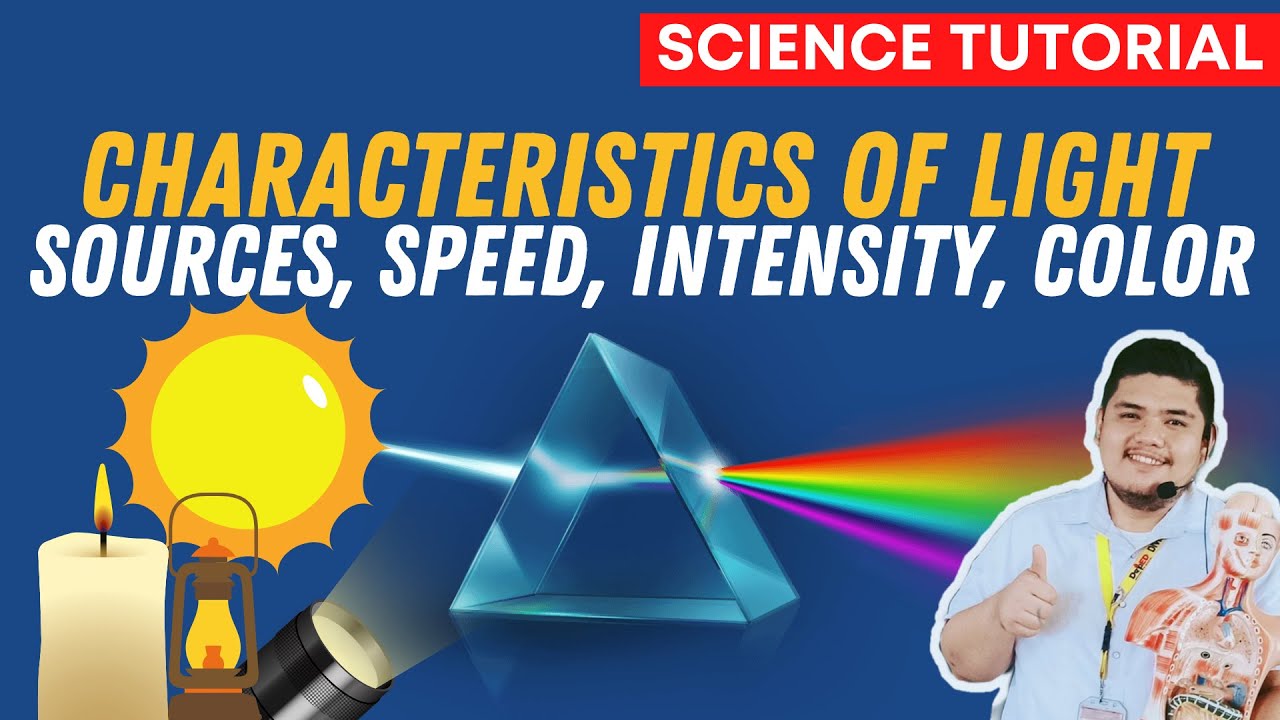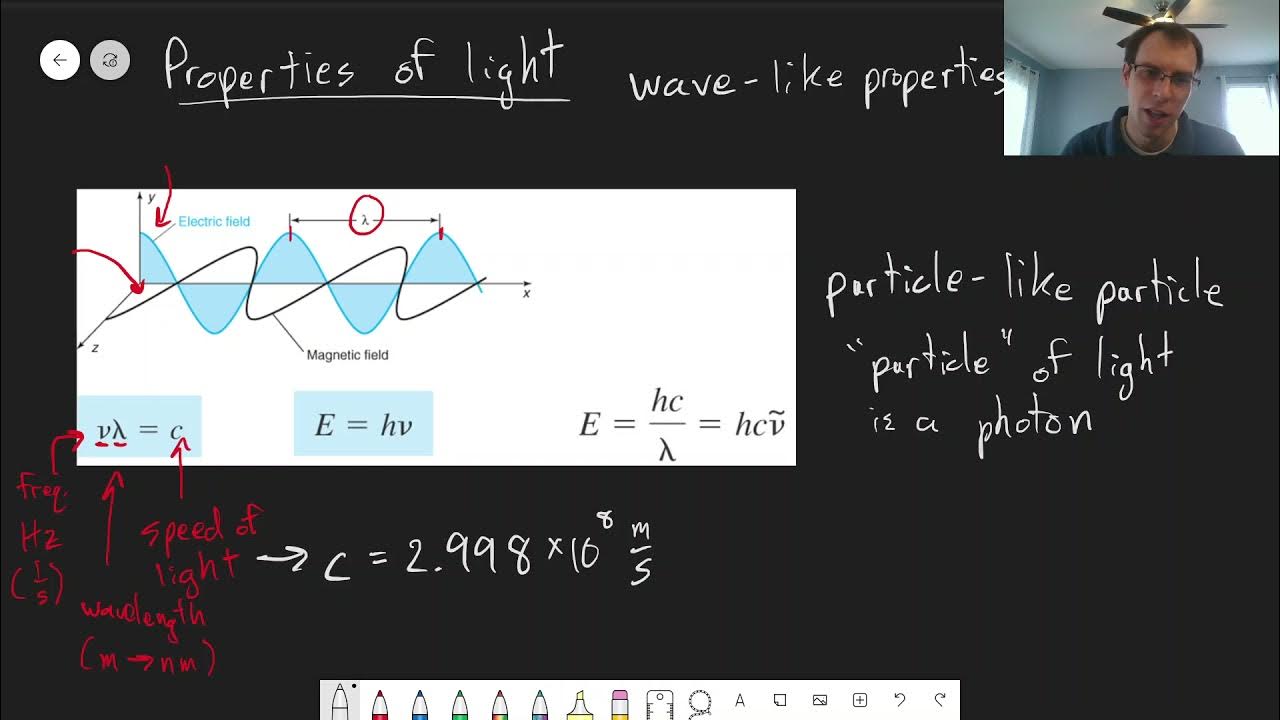Visible Light Spectrum Explained - Wavelength Range / Color Chart Diagram - Chemistry
TLDRThis educational video delves into the visible light spectrum, explaining the sequence of colors from ROYGBIV and their corresponding wavelengths, frequencies, and energies. It clarifies misconceptions about wavelength lengths, detailing the relationship between wavelength and energy. The script also covers the visible spectrum's range, equations relating speed of light, wavelength, and frequency, and how to calculate photon energy using Planck's constant. It concludes with converting energy from joules to electron volts, providing a comprehensive guide to understanding light's properties.
Takeaways
- 🌈 The visible light spectrum is represented by the acronym ROYGBIV, which stands for Red, Orange, Yellow, Green, Blue, Indigo, and Violet, in order of increasing energy.
- 🔍 Infrared light is located to the left of red light and is outside the visible spectrum, while ultraviolet light is to the right of violet and also not visible to the human eye.
- 📉 As you move from red to violet in the visible spectrum, the frequency of light increases, and so does its energy, while the wavelength decreases.
- 🔵 Blue light has a higher frequency and more energy than red light, but red light has a longer wavelength.
- 💡 The visible light spectrum wavelengths range from approximately 400 nanometers (violet) to 700 nanometers (red).
- 🤔 To determine the energy, frequency, and wavelength relationships, one must understand the equations involving speed of light (c), wavelength (λ), frequency (v or f), and Planck's constant.
- ⚖️ The speed of light in a vacuum is a constant 3 x 10^8 meters per second, but it slows down when passing through materials like glass or water due to their refractive indices.
- 📏 To calculate the frequency of a photon, divide the speed of light by the wavelength in meters. Convert nanometers to meters by multiplying by 10^-9.
- ⚡ The energy of a photon can be calculated using the equation E = h × v, where h is Planck's constant (6.626 x 10^-34 joules seconds).
- 🔋 Photon energy can also be expressed in electron volts (eV), with 1 eV equal to 1.602 x 10^-19 joules. Convert joules to eV by dividing by this value.
- 📚 Understanding the visible light spectrum, its associated wavelengths, and the ability to calculate frequency and energy of photons is essential for grasping fundamental concepts in physics.
Q & A
What is the ROYGBIV acronym and what does it represent?
-ROYGBIV is an acronym that represents the colors of the visible light spectrum in order of increasing energy, where R stands for Red, O for Orange, Y for Yellow, G for Green, B for Blue, I for Indigo, and V for Violet.
What types of light are located outside the visible light spectrum, to the left of red and to the right of violet?
-Infrared light is located to the left of red light, and ultraviolet light is located to the right of violet light. Both are outside the visible light spectrum and cannot be seen by the human eye.
How does the frequency of light relate to its energy and wavelength?
-The frequency of light is directly proportional to its energy but inversely proportional to its wavelength. This means that as the frequency increases, the energy increases, and the wavelength decreases.
Which photon has more energy, a green photon or a yellow photon, and why?
-A green photon has more energy than a yellow photon because, according to the ROYGBIV order, green light is to the right of yellow light, indicating a higher frequency and thus more energy.
What is the relationship between the frequency of a photon and its position in the visible light spectrum?
-The frequency of a photon increases as you move from the left (red) to the right (violet) in the visible light spectrum. Therefore, a photon of violet light has a higher frequency than a photon of red light.
Which color light has the longest wavelength in the visible light spectrum?
-Red light has the longest wavelength in the visible light spectrum, as it is located at the far right end of the ROYGBIV sequence.
What is the range of wavelengths for the visible light spectrum?
-The visible light spectrum ranges from approximately 400 nanometers (violet) to about 700 nanometers (red).
How can you determine the frequency of light given its wavelength?
-The frequency of light can be determined using the equation v = c / λ, where v is the frequency, c is the speed of light (approximately 3 x 10^8 meters per second), and λ (lambda) is the wavelength in meters. You must convert the wavelength from nanometers to meters before calculating.
What is Planck's constant and how is it used to calculate the energy of a photon?
-Planck's constant is approximately 6.626 x 10^-34 joules seconds. It is used in the equation E = hν, where E is the energy of the photon, h is Planck's constant, and ν (nu) is the frequency of the photon.
How can you convert the energy of a photon from joules to electron volts?
-To convert the energy of a photon from joules to electron volts, divide the energy in joules by 1.602 x 10^-19, which is the energy equivalent of one electron volt in joules.
What is the energy of a photon with a wavelength of 500 nanometers?
-A photon with a wavelength of 500 nanometers has an energy of approximately 3.976 x 10^-19 joules, which is equivalent to about 2.48 electron volts.
Outlines
🌈 Understanding the Visible Light Spectrum
This paragraph introduces the visible light spectrum, explaining the sequence of colors (ROYGBIV) from red to violet and their relation to energy, frequency, and wavelength. It clarifies that red light has the longest wavelength and least energy, while violet has the shortest wavelength and most energy. The paragraph also poses questions to engage viewers in understanding these concepts, such as which photon has more energy and which has a higher frequency, and provides the correct answers based on the spectrum's arrangement.
🔬 Wavelength and Frequency Relationships
The second paragraph delves into the specific ranges of wavelengths for each color in the visible light spectrum, from violet at 400 nanometers to red at 700 nanometers. It explains how to determine the color corresponding to a given wavelength and introduces fundamental equations relating the speed of light (c), wavelength (lambda), and frequency (v or f). The paragraph also discusses how the speed of light is affected by different media and provides a step-by-step calculation to determine the frequency of light with a given wavelength.
⚡ Calculating Photon Energy and Units Conversion
The final paragraph focuses on calculating the energy of a photon using Planck's constant and the frequency of the photon. It demonstrates how to find the energy of a photon at a specific wavelength (500 nanometers) and convert that energy from joules to electron volts, a common unit in quantum physics. The summary emphasizes the importance of unit conversion and provides the formula and calculation for understanding photon energy in different units.
Mindmap
Keywords
💡Visible Light Spectrum
💡ROYGBIV
💡Wavelength
💡Frequency
💡Energy
💡Infrared
💡Ultraviolet
💡Speed of Light
💡Planck's Constant
💡Electron Volt
💡Index of Refraction
Highlights
The video focuses on the visible light spectrum, discussing colors, wavelengths, frequency, energy, and the relationships among them.
The ROYGBIV mnemonic ranks the colors of light in order of increasing energy.
Infrared and ultraviolet light are outside the visible light spectrum, with infrared to the left of red and ultraviolet beyond violet.
The frequency of light increases to the right on the spectrum, with blue light having a higher frequency and more energy than red light.
Red light has a longer wavelength, while violet has the shortest in the visible light spectrum.
The visible light spectrum ranges from 400 to 700 nanometers, with violet at the shorter end and red at the longer end.
The color corresponding to a specific wavelength can be determined by its position within the 400-700 nanometer range.
The speed of light in a vacuum is a constant, but it slows down when passing through materials like water, glass, or diamond.
The speed of light in a material is calculated by dividing the speed of light in a vacuum by the material's index of refraction.
The frequency of light can be calculated using the speed of light divided by its wavelength.
Planck's constant is used to calculate the energy of a photon by multiplying it with the photon's frequency.
The energy of a photon at 500 nanometers is approximately 3.976 x 10^-19 joules.
Energy can also be expressed in electron volts, with 1 electron volt equal to 1.602 x 10^-19 joules.
The video provides equations and examples to understand the relationship between wavelength, frequency, and energy.
The video concludes with the practical application of converting wavelength to frequency, frequency to energy, and joules to electron volts.
Transcripts
Browse More Related Video

Electromagnetic Spectrum Explained - Gamma X rays Microwaves Infrared Radio Waves UV Visble Light

Electromagnetic Spectrum - Basic Introduction

Bohr Model of the Hydrogen Atom, Electron Transitions, Atomic Energy Levels, Lyman & Balmer Series

Wavelength, Frequency, Energy, Speed, Amplitude, Period Equations & Formulas - Chemistry & Physics

Characteristics of Light | Source, Speed, Intensity, Color | Science 7 Quarter 3 Module 4 Week 5

Chapter 18: Properties of Light | CHM 214 | 150
5.0 / 5 (0 votes)
Thanks for rating: